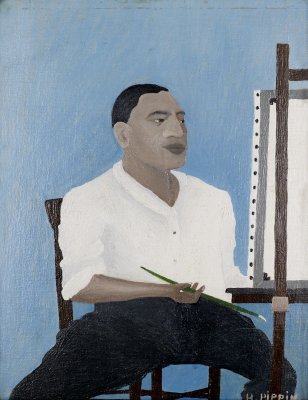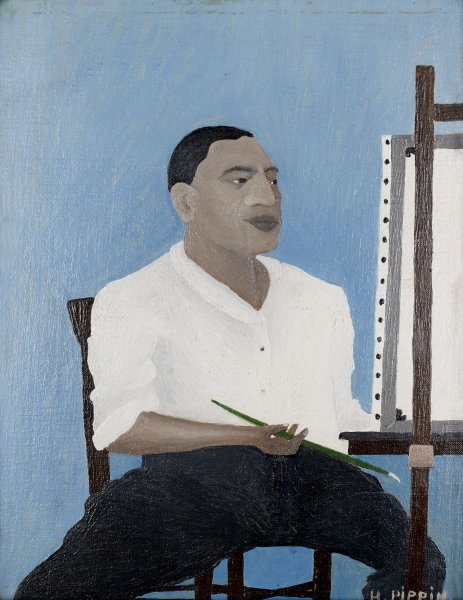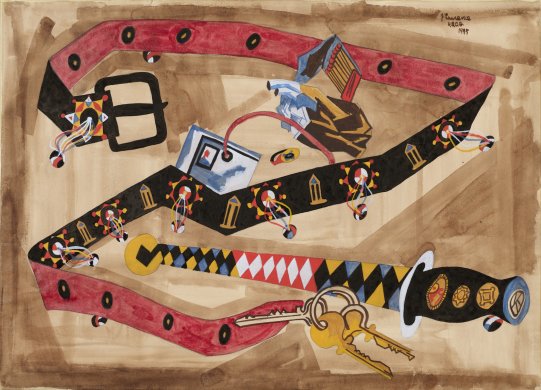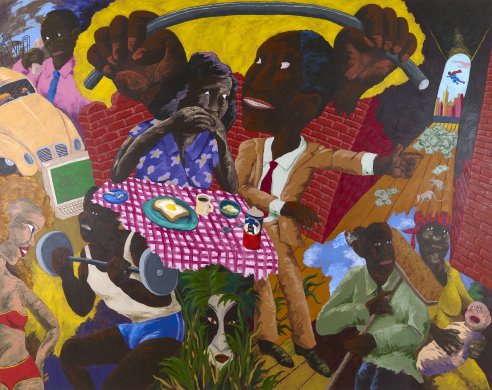In honor of Black History Month, we’re celebrating works currently on view by African American artists, including Horace Pippin’s Self-Portrait, 1941.
Many of Horace Pippin’s works are related to his experience serving in World War I (1914–18), and this is one of only two known self-portraits. Stationed in France as part of a segregated African American regiment, Pippin was wounded by a German sniper, leaving his right arm paralyzed. As part of his rehabilitation, he taught himself to paint, holding the brush in his right hand and guiding it onto and around the canvas with his left.
Although self-taught, Pippin engaged with the modernist trend of calling attention to the natural flatness of canvas. He achieved this in Self-Portrait through several techniques. First, the easel and chair are created almost exclusively using horizontal and vertical lines, rather than the diagonals traditionally utilized to create the impression of depth. Secondly, Pippin places himself as parallel as possible to the surface of the painting. Finally, the minimal color palette further removes any sense of spatial extension.




